Íàçàä â áèáëèîòåêó
Palaeoenvironment assessment of Pliocene Lom lignite (Bulgaria) from bitumen analysis and preparative off line thermochemolysis
Àâòîð:M. Stefanova, O. Maman, B. Guillet and J. -R. Disnar
Èñòî÷íèê: ISTO, UMR 6113, Lab. Org. Geochem., University of Orleans, BP 6759, 45067, Orleans Cedex 2, France
Abstract
The Dacian coal bearing province is located in NW Bulgaria. Coal formation is thought to be connected with desiccation of the Dacian Basin during a prolonged regression in the Late Pontian and Pliocene (Dacian-Romanian age). A Lom lignite sample was characterized via micropetrography, bulk chemical analysis, spectral methods and thermochemolysis. The pollen record was poor, suggesting coal formation under oxygen-rich conditions during peatification. Straight chain alkanes, alkan-2-ones, alkanols, des-A-triterpenoids, aromatized triterpenoids, aromatized hopane, hopene/hopanes and triterpenoids with a strong dominance of oleanane-derived structures were present in the extracted bitumen. The residue after extraction was subjected to preparative off line tetramethylammonium hydroxide (TMAH) thermochemolysis. The aliphatic products released were C22-C27 fatty acid (FA) methyl esters, i.e. alpha-methoxymethyl esters, C22-C28 even numbered alpha,omega-diacids dimethyl esters with a smooth distribution and traces of i- and ai-C15 acid methyl esters. Trapped and bound FAs were distinguished using tetraethylammonium acetate (TEAAc) treatment. The main thermochemolysis products were phenols structurally related to lignin. Vanillyl and syringyl units were produced in similar amounts, indicating nonwoody angiosperm vegetation as the main plant input to the palaeo-swamp, probably originating from marsh or grassland sources.
The bitumen provided unequivocal information for an angiosperm contribution to the mire, while the results of the TMAH pyrolysis revealed a concomitant angiosperm and gymnosperm input. The biomarker assemblage makes the Lom lignite unique in Bulgaria, all the other Bulgarian Neogene lignites being dominated by coniferous vegetation, with only traces of angiosperm contributions.
1. Introduction
The Dacian coal-bearing province is located in NW Bulgaria. Coal formation is thought to be connected with desiccation of the Dacian Basin during a prolonged regression in the Pliocene during the Dacian-Romanian. According to Harzhauser and Mandic (2008), this stage of Paratethys corresponds to Lower Pliocene in the chronostratigraphic division of the Neogene period. Only a few studies regarding the geology and petrology of the Lom lignites have been carried out. They indicate that coal formation occurred near the Southern margin of the Dacian basin, where a vast delta plain was formed. In such an environment, extensive peat accumulation took place and resulted in the deposition of a low rank coal seam up to 40 m thick interfingered with layers and lenses of unsorted sands, sandy clays and clays. In previous studies, Siskov et al. (1984) and Siskov and Angelov (1984) tried to reconstruct the coal-forming palaeo-plant community on the basis of
micropetrographic data. Petrological observations gave grounds for rejecting the concept of peat formation in a Iimnic environment, suggesting rather a fan delta sedimentation model.
Analytical pyrolysis coupled with gas chromatography- mass spectrometry (Py-GC/MS) is a powerful technique for the study of natural biopolymers and geomolecules. Polymeric material undergoes thermally induced covalent bond cleavage to produce lower molecular weight compounds that reflect the composition of the sample. A decade ago, conventional pyrolysis was improved via flash heating of the sample in the presence of tetramethylammonium hydroxide (TMAH), known as “pyrolysis-methylation” or “thermochemolysis" (McKinney and Hatcher, 1996). In contrast to conventional pyrolysis, the procedure avoids decarboxylation and produces methyl esters and ethers. Thermochemolysis can be used off line on a preparative scale with internal standards for quantitative studies (del Rio et al„ 1996, 1998; Grasset and Ambles, 1998).
The approach has been applied to a variety of bio- and geological materials using different alkylation reagents, allowing the distinction between methoxy groups present in the initial sample (residues of lignin in geopolymers) and those produced during thermochemolysis. A combination of preparative off line TMAH thermochemolysis and tetraethylammonium acetate (TEAAc) treatment provides the possibility of discriminating between free fatty acids (FAs) tightly trapped within the organic matrix and ester- bound acids (Grasset et al., 2002). Hence, thermochemolysis with different alkylation reagents is a powerful tool for the investigation of biopolymers, fossils (i.e. peatified wood), lignin, humic substances, coal, asphaltenes, kerogen of petroleum source rocks, oil shales, etc. (Hatcher et al., 1995; Almendros et al., 1999).
The aim of this study was to characterize the biomarker composition of the solvent extractable fraction of Lom lignite, the so-called free bitumen, additional information being provided via TMAH thermochemolysis of the residue. The study is based on the analysis of a single sample and should therefore be regarded as preliminary. The data are discussed in relation to other Neogene lignites from Bulgaria, i.e. Thracian and Sofia coal-bearing provinces, their palaeoenvironments having already been described.
2. Study area
The study area is located in NW Bulgaria (Fig. 1) and represents the most southern part of the Dacian basin (also known as the Forecarpathian Basin). The evolution of the basin during the Neogene is presented in detail by Kojumdgieva and Popov (1989). During the Lower Miocene, NW Bulgaria was an upland area and no sediments are known from this period. The beginning of the Middle Miocene is characterized by a large marine transgression flooding most of NW Bulgaria, which became part of the Dacian Basin. With several transgressive/regressive cycles, the basin existed until the Pliocene (Kojumdgieva and Popov, 1989). During the Upper Miocene, the area covered by seawater shrank significantly because of the uplift of the Carpathians and West Balkan Mountains (Fig. 1). During the Lower Pontian, the sedimentation changed from brackish to fresh-water conditions. The Upper Pontian and the rest of the Pliocene are only represented by continental
sediments with a limited distribution in the Lorn area. During the Pliocene, the Lom Basin was the southernmost part of the Dacian Basin (Popov and Kojumdgieva, 1966). The coal seam is up to 40 m thick and is interbedded with layers and lenses of unsorted sands, sandy clays and clays. In the northern part of the basin, the coal formation consists of a > 200 m thick succession of almost regularly alternating clays and lignites (Snell et al., 2006).
![Fig. 1. Geological map of NW Bulgaria during the Pliocene [redrawn after Popov and Kojumdgieva (1966), with corrections]. (1) Marginal (littoral) zone. (2) Inner zone. (3) Vidin high. (4) Boundary of basin during the Pontian (latest Miocene-earliest Pliocene). (5) Boundary of basin during early Pliocene. (6) Boundary of basin during late Pliocene.](images/art5_1.png)
Figure 1. Geological map of NW Bulgaria during the Pliocene [redrawn after Popov and Kojumdgieva (1966), with corrections]. (1) Marginal (littoral) zone. (2) Inner zone. (3) Vidin high. (4) Boundary of basin during the Pontian (latest Miocene-earliest Pliocene). (5) Boundary of basin during early Pliocene. (6) Boundary of basin during late Pliocene.
3. Material and methods
3.1 Lignite sample
Lignite in the Dacian coal-bearing province is flooded by the River Danube most of the year, posing a problem for creating a lithostratigraphic profile. Desiccation in summer 2004 and a decrease in the liver level allowed digging up of some lignite samples in an emerged temporary island. For microscopic investigation, one sample was crushed, powdered (~ 1 mm particle size), mounted in epoxy resin, and polished. Maceral analysis was performed with a Carl-Zeiss NU2 microscope. More details of the preparation can be found in Zdravkov et al. (2007).
3.2 Pollen analysis
To analyze its palynomorph content, 50 g of pulverized sample were processed according to standard methods for disintegration of Tertiary coal sediments by treatment with HC1, oxidation with HN03, base treatment (KOH) and separation using a heavy liquid (ZnCl2, specific gravity 2.0). The sample was washed with distilled water and centrifuged between each step, sieved to remove small clay components and stored in glycerin. Two pollen slides were mounted and analyzed. Pollen analysis, counting and microphotography (Plates 1 and 2) were carried out using digital camera.
3.3 Solvent extraction
For free bitumen analysis, the lignite sample (30 g) was Soxhlet extracted for 30 h using CHC13 and the extract was separated on a silica gel mini-column into the following fractions: neutral (n-hexane eluent), aromatic (toluene eluent) and polar (acetone eluent) as described by Stefanova et al. (2005a).
3.4 Preparative off line thermochemolysis
Preparative off line thermochemolysis analysis was carried out following the conditions reported by Grasset and Ambles (1998) and Grasset et al. (2002). Briefly, ca. 1-2 g of the residue after bitumen extraction, were placed in a ceramic boat and 2 ml TMAH (50% v/v in MeOH) or 2 ml TEAAc (25% v/v in EtOH) were added dropwise. The moistened sample was left to stand overnight. It was then inserted into a Pyrex tube and heated at 400 °C (1 h), the thermochemolysis products being removed by a flow of He (100 ml/min) to two traps of CHC13 cooled in an ice bath (-15 °C). At the end of the treatment, the system was disconnected and the trapped products were combined and concentrated under reduced pressure. They were separated on a silica gel mini-column using mixtures of Et20 in petroleum ether with increasing polarity. The following fractions were prepared: petroleum ether (I); 10% Et20 in petroleum ether (II); 20% Et20 in petroleum ether (III); 50% Et20 in petroleum ether (IV) and Me2CO (V). Separation was monitored using TLC with commercial plates (Merck Kirselgel 60F254) developed in 8% ethyl acetate in petroleum ether. The plates were visualized under UV light (preparative TLC) or by carbonization with a H2S04/Me0H solution (v/v, 60/40) and heating (analytical TLC). Appropriate standards and methylated standard compounds were used to recognize the fractions containing the hydrocarbons, FAs and phenols.
Phenols structurally related to lignin released during thermochemolysis were grouped according to Hedges and Mann (1979): vanillyl phenols (V) – 3-methoxy-4-hydroxybenzaldehyde (vanillin, G4); 3-methoxy-4-hydroxyacetophenone (acetovanil- lone, G5); 3-methoxy-4-hydroxybenzoic acid (vanillic acid, G6). Syringyl phenols (S)-3,5-dimethoxy-4-hydroxy- benzaldehyde (syringyl aldehyde, S4); 3,5-dimethoxy-4- hydroxyacetophenone (acetosyringone, S5); 3,5-dime- thoxy-4-hydroxy benzoic acid (syringic acid, S6). Cinnamyl acids (C) – 3-(3-methoxy-4-hydroxyphenyl)-propenoic acid (ferrulic acid, G18); 3-(3,5-dimethoxy-4-hydroxy- phenyl)-propenoic acid (SIS). TMAH thermochemolysis converts phenols to methyl ether derivatives and acids to methyl esters. Abbreviations correspond to ethers and esters of the above compounds.
In the GC chromatograms the content (rel.%) of the listed compounds was determined from peak integration. Values for V, S, C were obtained and C/V, S/V ratios were calculated. The diagram V/C vs. S/V was constructed according to Hedges and Mann (1979) and area assignment was done according to Meyers (1997).
3.5 Instrumental analysis
3.5.1 Ultimate and proximate analysis
Ultimate analysis was carried out with a Perkin-Elmer 240 Micro CHN Analyzer using dry combustion at 900 °C. Moisture was determined by drying at 105 °C (1 h). Ash was determined by ignition at 625 °C (6 h). Yields of extract and product of thermochemolysis products were recalculated on “dry-ash-free" basis (daf). A sample of Lom lignite was crushed to < 0.2 mm and analyzed for total S content using a standard test (ASTM D3177-02). Organic S distribution was studied using pyrolytic methods with MS detection and quantitative interpretation of the results (Marinov et al., 2005).
3.5.2 Rock-Eval
Rock-Eval analysis was carried out with a “Turbo” model RE6 pyrolyzer (Vinci Technologies). The basic operating principles of this model are described by Lafargue et al. (1998). The instrument allows determination of total organic carbon (TOC), free hydrocarbon compounds (Si), maxi S2 peak profile, hydrogen index (HI), oxygen index (OI).
3.5.3 GC/MS
Neutral and aromatic fractions from the separation of the bitumen on Silicagel mini-columns were analyzed with a Hewlett-Packard 5-MS instrument equipped with a DB-5 column, a flame ionization detector (FID, 300 °Ñ) and a split/splitless capillary injector maintained at 300 °Ñ and used in the splitless mode (valve reopened 1 min after injection). After 0.5 min hold at 85 °Ñ, the oven temperature was increased from 85 to 200 °Ñ at 20°/min and from 200 to 320 °Ñ at 5°/min. Peak assignments were done by comparison with the NIST library or literature data. Thermochemolysis products were also analyzed using GC and GC/MS. For GC, a Hewlett-Packard HP 6890 chromatograph (split injector, 250 °Ñ; FID at 300 °Ñ) and fused silica column with He as carrier gas. The GC oven temperature was programmed from 60 to 300 °Ñ (hold 20 min) at 5 °C/min. GC/MS was performed with a Thermo Finnigan Trace GC coupled to a Thermo Finnigan Automass (same GC conditions). The mass spectrometer was operated in the electron ionization mode at 70 eV, with ion separation in a quadrupole filter.
4. Results and discussion
Lom lignites are without industrial importance because of their high ash, moisture and sulfur contents, and low calorific value. Table 1 summarizes the results of the ultimate and proximate analyses, distribution of sulfur in structural form and Rock-Eval pyrolysis data.
The micropetrographic composition of the sample is dominated by an attrinite ground mass [up to 85 vol%, "mineral matter free” (mmf) basis] containing small amounts of corpohuminite (< 1 vol%, mmf), microsporinite (1-1.5 vol%, mmf), cutinite (<1 vol%, mmf), fluorinite (6- 7 vol%, mmf) and liptodetrinite (7-8 vol%, mmf). Maceral contents were used by Zdravkov et al. (2007) to calculate facies indicators for Neogene Bulgarian coals. Maceral ratios applied for palaeoenvironmental interpretation are based on the assumption that coal macerals are plant and environment dependent, and can be used to assess the characteristics of the palaeo mire. The proposed coefficients are defined by Bechtel et al. (2007, and references therein). Insofar as the micropetrographic composition of Lom lignite is strongly dominated by attrinite, the calcu-lated value for the “tissue preservation index” (TPI) should be close to zero. Such a value indicates either predominantly herbaceous vegetation or a low subsidence rate accompanied by advanced humification and strong plant material decomposition in the palaeo swamp.
Rock-Eval pyrolysis data assign a terrestrial character to the sample. In the HI vs. 01 diagram the sample is ascribed as a Type III kerogen (Espitalie et al., 1985a,b; Disnar et al., 2003; Baudin et al., 2007). The position of the sample in the HI/Tmax diagram corresponds to immature coal and is in agreement with the reflectance index value (R0 0.13%) measured by Siskov (1997). The very low Tmax value (Table 1) is typical for the thermal breakdown of biological constituents such as cellulose and/or lignin, two major constituents of woody and herbaceous tissues.
The yield of the bitumen extract (2.4%, mean value of two extractions) is relatively low, but the bitumen is rich in information with respect to source input and burial. The extract was separated into aliphatic (20%), aromatic (22%) and polar fractions (54%), although GC/MS indicated some overlap in aliphatic vs. aromatic components. The data revealed the presence of n-alkanes and terpenoids (Figs. 2 and 3, Table 2). The n-alkanes, hopanes and C27 D-ring monoaromatic hopane were present in the first fraction, while alkan-2-ones, alkanols, polar diterpenoids and non-hopanoid triterpenoid were in the second. At the same time, some des-A-triterpenoids and products of (3-amyrin aromatization occurred in both fraction (Table 4). The sample was very poor in fossil palynomorphs and did not provide enough grains for pollen counts. The following plants were recognized: Pinus diploxyon type, Pinus haploxylon type, Taxodiaceae, cf. Clyptostrobus, Cupressa- ceae, Cedrus and Tsugafrom gymnosperms (Plate 1). The angiosperms content was low, with only few taxa, e.g. Quercus, Juglandaceae (Engelhardieae), Carpinus, Carpinus orientalislOstrya type, and some herbs: Poaceae, Typha, Chenopodiaceae, Cyperaceae, Plantago and cf. Brassicaceae (Plates 1 and 2). In addition, non-pollen palynomorphs were recorded. Most were Zignemataceae zygospores of Mougeotia and Zygnema and rare Ovoidites (Spirogira type). Non-pollen palynomorphs (probably algal cysts) belonging to Type 128A and B and Type 303 (van Geel et al., 1983, 1989; Barthelmes et al., 2006) also occurred in low abundance. van Geel et al. (1989) describe Type 128(A) as an indicator of eutrophic to mesotrophic open water. Frequent were fungal spores (ascospores and conidia), parts of fungal hypha and plant tissue, tracheids of vascular plants and microscopic charcoal particles (Plate 2).
Taxodiaceae and Glyptostrobus originate from wetland forest vegetation, Poaceae, Typha, Cyperaceae and Plantago from herbaceous wetland communities, and Quercus, Enge- Ihardieae, Carpinus and Carpinus orientalis/Ostrya type from mixed mesophytic forests. Conifer (Pinus) pollen is a result of long distance transportation from neighbouring mountains (Palamarev, 1991; Mai, 1995). Popescu et al. (2006) suggested the coexistence of forest swamp and herbaceous wetland vegetation in the Pliocene lignites of Lupoaia section (SW Romania). The authors stated that these pollen assemblages had a strong resemblance to the modern vegetation of South Florida and the Mississippi Delta, where swamp forests (with Taxodium distichum) and herbaceous marshes are the main component of the wetland vegetation.
The abundance of zygospores may be an indicator of environmental conditions (Chmura et al., 2006), e.g. water current, depth of basin, salinity, acidity, etc. The zygospores of Zygnema, Spirogyra, and Mougeotia are common in shallow freshwater basins (periphyton) and marsh soils, attached to submerged aquatics and in pools with pH 7. The Zygnemataceae algae produce spores during conjugation (sexual reproduction). Sexual reproduction in these algae is thought to be triggered by changes in the nutrients or water level. The exact influence of gradients in nutrient concentration and hydroperiod on the distribution of zygospores is not well known, but future studies could enhance the diagnostic value of these spores for palaeoenvi- ronmental reconstruction (Chmura et al., 2006).
Despite the poor pollen record, we could conclude that coal formation probably took place under oxygen-rich conditions during peat deposition. The presence of fungal fossils indicates such an environment. This assumption explains the low content of palynomorphs because their exine is sensitive and can easily be destroyed in oxygen- rich environments. Thus, the presence of numerous corroded pollen grains also supports the supposition of the presence of palaeo-oxygenation processes during coal accumulation. Ivanov et al. (2007a) suggested similar envi-ronments during the deposition of the lignites of the Beli Breg Basin (W. Bulgaria), which also show a very poor pollen content. The low quantity of palynomorphs restricts us in drawing certain conclusions about the prevailing type of swamp vegetation – herbaceous or woody one.
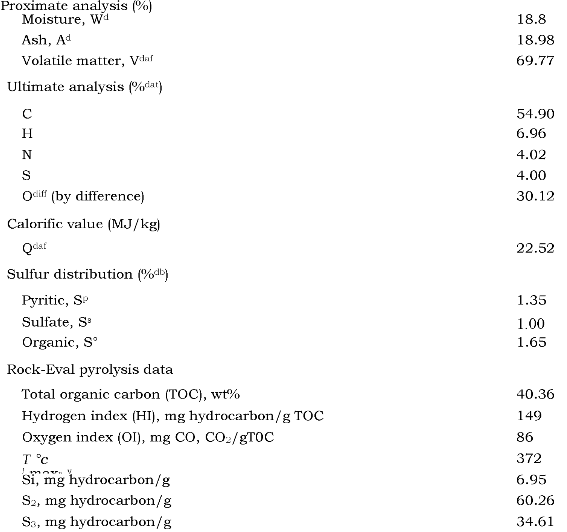
Table 1. Bulk characteristics of Lom lignite sample
4.3 Bitumen composition
n-Alkanes.
The n-aikane distribution (Fig. 2) is characterized by a strong dominance of nC29 (22% of total n-alkane distribution in m/z 85 chromatogram and 4% of TIC on Fig. 2). The sum of n-alkanes < C20 is low (11% of total n-alkanes). There are traces of the regular isoprenoids pristane (i'soC19) and phytane (isoC20). It is worth noting that prist-1-ene and prist-2-ene were the main compounds in the first fraction of the thermochemolysis products (see below). The origin of prist-1-ene isomers in coal extracts has been dis-cussed by Czechowski et al. (2002) and gave us grounds for assuming that the regular isoprenoids were mainly in a “bound” form and difficult to release by direct Soxhlet extraction. Pristane is commonly found in coal extracts and is thought to be derived from oxidation and decarboxylation reactions of phytol, the hydrolysed product of chlorophyll (Dong et al., 1987). Another potential precursor for regular isoprenoids is tocopherol (Fig. 3). It is widespread in plants and is often registered in the extracts and pyrolysates of Bulgarian Neogene coals (Stefanova et al., 2007).
The carbon preference index (CPI) was calculated for the n-C24 to n-C homologues. A CPI value of 3.15 confirms the dominance of odd numbered higher homologues and is typical for low rank coals with an epicuticular wax contribution from higher plants, spores, pollen, etc. (Chaffee et al., 1986).
n-Alkan-2-ones. A homologous series of long chain acyclic n-alkan-2- ones was present in the second fraction (Table 2). The distributions of long chain n-alkanes and n-alkan-2-ones, i.e. nC24 to nC33, are similar. Both series maximize at nC29/ nC31 and the odd homologues dominate. This similarity suggests a common origin. Saturated n-alkan-2-ones with minor n-alkan-3-ones and n-alkan-4-ones are abundant in geological samples (Tuo and Li, 2005, and references therein). Their possible origin(s) and sources are suggested as: (a) epicuticular waxes of peat-forming plants; (b) microbial oxidation of n-alkanes; (c) p-oxidation and decarboxylation of FAs; and (d) microbial degradation of longer chain n-alkan-2-ones. Inasmuch as the shorter chain homologues are absent from the clay/macrofossil extract, the last possibility is not tenable. Hydration of al- kenes followed by oxidation is yet another possibility. The close resemblance in the distributions leads us to propose microbially mediated p-oxidation of the n-alkanes as a possible origin for the n-alkan-2-ones.
n-Alkanols. Long chain even numbered n-alkanols from C24 to C25 were found (Table 2; Fig. 3). It can be surmised that the aliphatic lipids in the extract originate from epicuticular leaf waxes of higher plants (Eglinton and Hamilton, 1967).
Steroids. Stigmastan-3-one was the only steroid component in the extract (Tables 3 and 4). The C28 and C29 steroids are abundant in the plant kingdom and reflect an input of detritus from higher plants (Huang and Meinschein, 1976).
Polar diterpenoids.
The preservation potential of certain bioterpenoids in the form of their phenol or ketone derivatives is appreciable (Otto et al., 2005). These compounds provide valuable information on precursors, transformation during coal burial and coalification. Diterpenoids can thus be used as (palaeo)chemosystematic indicators for the systematics and phylogeny of conifers (Otto and Wilde, 2001). A very low abundance of two polar diterpenoids was observed (Fig. 3 and Table 3). Ferruginol and its dehydrated analogue are common constituents of modern species of Cupressa- ceae/Taxodiaceae and Podocarpaceae (Otto and Wilde, 2001; Stefanova and Simoneit, 2008). Their chemotaxo- nomic value has been discussed in studies devoted to other Bulgarian Neogene lignites, where the vegetation in the palaeoswamp was dominated by conifers (Stefanova et al.r 1995, 1999, 2005a,b; Bechtel et al., 2005). The negligible diterpenoid content in the extract under study is an indication of the subordinate input of gymnosperms to the Lom lignite organic matter.
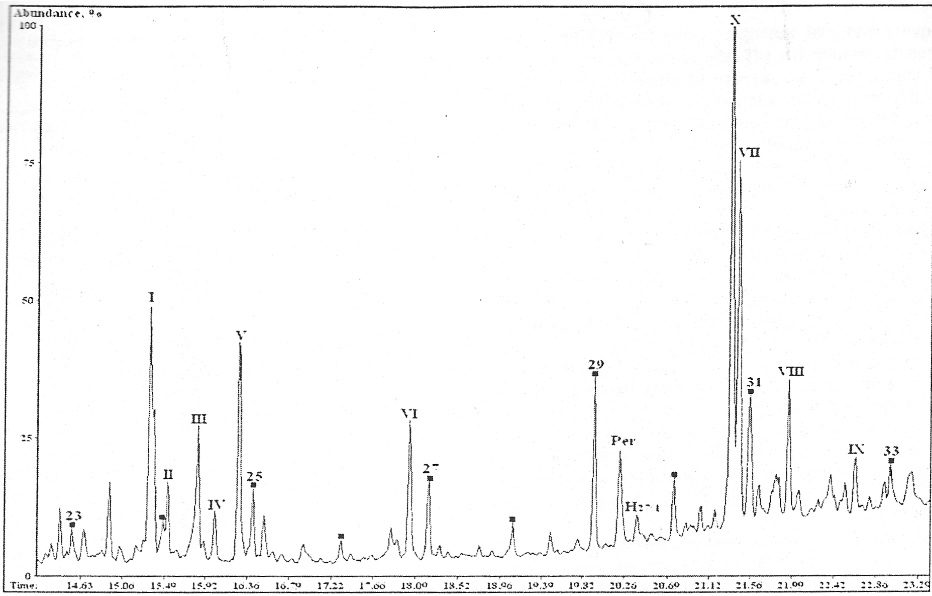
Figure 2. TIC trace of bitumen neutral fraction
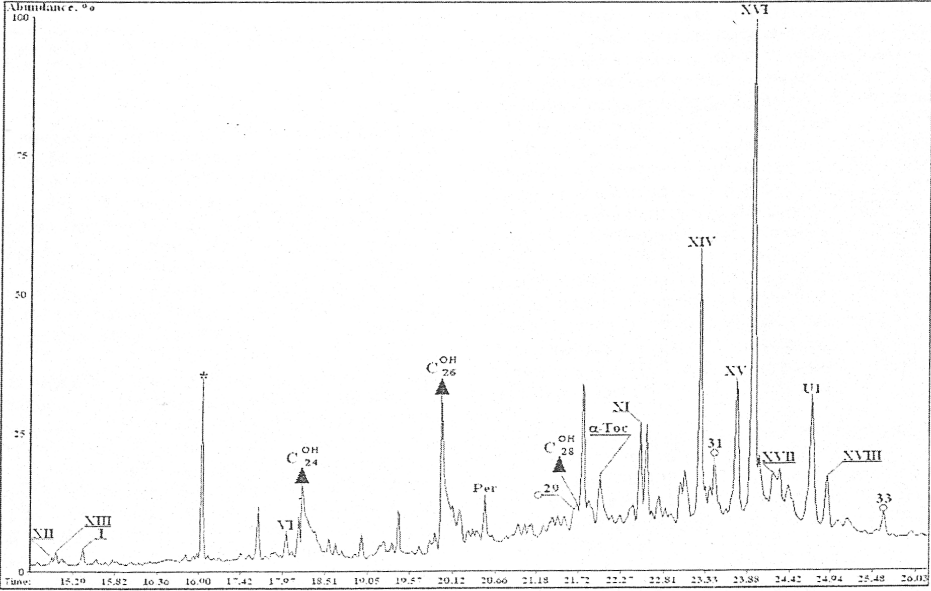
Figure 3. TIC trace of bitumen fraction
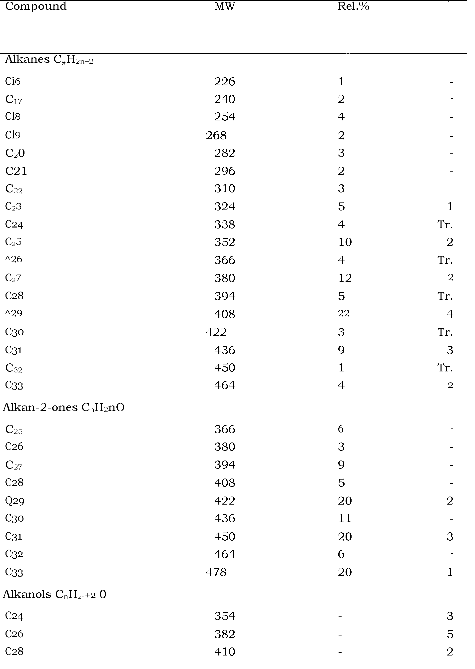
Table 2 – Aliphatic components in bitumen extract (from GC/MS)
Polycyclic aromatic hydrocarbons (PAHs).
Perylene was the only condensed PAH in the sample. It is ubiquitous in recent sediments, but its origin remains puzzling (Silliman et al, 2000). It has long been recognized as a diagenetic/biogenic marker on the basis of the fact that it does not follow the distribution pattern of combustion- derived PAHs. Wang and Simoneit (1991) and Bechtel et al. (2007) identified perylene in coal extracts and fossil wood remnants. It has an ambiguous origin and both terrestrial and autochthonous marine origins have been proposed. It is not considered to be a source specific marker, although fungi have been proposed to be the major biological precursors (Jiang et al., 1998).
Triterpenoids.
Triterpenoids in fossils are divided into two groups, hopanoids and non-hopanoids. The distribution of non- hopanoids is source related whereas the hopanes tend to reflect the oxicity of the depositional environment (Philp, 1994). Hopanes are mostly derived from bacteria but some hopanoids sg C30 may also be derived in part from lower plants like mosses, ferns and lichens (Ourisson et al., 1987). The significance of hopanoids in Bulgarian Neogene coals has been discussed (Stefanova et al., 2005a; Bechtel et al., 2005). The m/z 191 chromatogram allowed visualization of the hopenes 22,29,30-trisnor-hop-17(21)-ene, H27:i. M+' 268 and H2g:i, M+’ 396 (Table 3). A peculiarity of the hopane distribution was the extremely high relative abundance of a D-ring monoaromatic hopane X, the dominant peak in Fig. 2. Greiner et al. (1976) first reported the presence of a series of pentacyclic compounds with various degrees of aromatization (1-4 rings) in the Messel oil shale of Eocene age (Germany). They explained that aromatization started in ring D and progressively spread over to ring A. The hypothesis was proven by comparison with synthesized reference compounds. The only hopanoid in the second fraction was the C27 hopanone, 17(3(H)-trisnorhopan- 21-one (XI).
Triterpenoid derivatives with lupane, ursane and olean- ane skeletons are markers for angiosperms. The most abundant higher plant triterpenoids in the bitumen extract are oleanane derivatives like (3-amyrone XVI, 15 rel.% (Table 3). It should be noted that the presence of a functionality at C-3 in triterpenoids (alcohols, ketones) makes them more susceptible than hopanoids to microbial or photochemical degradation, leading notably to des-A-triterpe- noids. Triterpenoids and des-A-triterpenoids of the oleanane/lupane series are listed in Table 3. The only lupane structure is des-A-lupane IV. It was assumed that lupane derivatives were present in low amount in the palaeo vegetation vs. p-amyrone (oleanane-type) bioterpenoids.
The problem with oleananes as source markers in terrestrial systems is that the main fate of the functionalized higher plant triterpenoids is not reduction but partial or complete aromatization. It has been demonstrated that progressive aromatization starts very soon after deposition, via microbial mediation (Lohmann et al., 1989; Murray et al., 1997). The absence of triterpenoid aromatization end products from our extract indicates that the process is not complete. In a study of oleananes in oils and sediments, several pathways for transformation of C-3 functionalized precursors (i.e. fi-amyrone) were proposed (Murray et al., 1997, and references therein). Some are applicable to explain our set of compounds:
- Progressive aromatization and demethylation with preservation of the pentacyclic skeleton (compounds VII, VIII, IX). It should be noted that 24,25- dinoroleana-l,3,5(10),12-tetraene (VII) was the second prominent peak in the first fraction (8%; Fig. 2 and Table 3).
- Loss of ring A and formation of des-A-oleananes (des-A-olean-12-ene I and products of subsequent aromatization and demethylation; V and VI). The des-A-triterpenoids were generated by microbial or photochemical processes from the precursor triterpenoids (Lohmann et al., 1989; Stout, 1992; Wool- house et al., 1992).
A hint for a Gramineae (Poaceae) contribution to Lorn lignite was the finding of olean-12-en-3beta-ol methyl ether (beta-amyrin-methyl ether, XVIII). Jacob et al. (2005) used methyl ethers of pentacyclic triterpanes for a palaeoenvironmental and phytochemical study of lacustrine sediments. It was supposed that these compounds play an important role in preventing functionalized higher plant triterpenoids from early degradation processes and improving their preservation. This could be one possible explanation for the resistance of oleanane over lupane, ursane, bauerane, taraxerane and friedelane structures. Additionally, an unknown compound with M+' 438 and m/z 203, m/z 218 (Table 3), likely related to higher plant triterpenoids, could be detected.
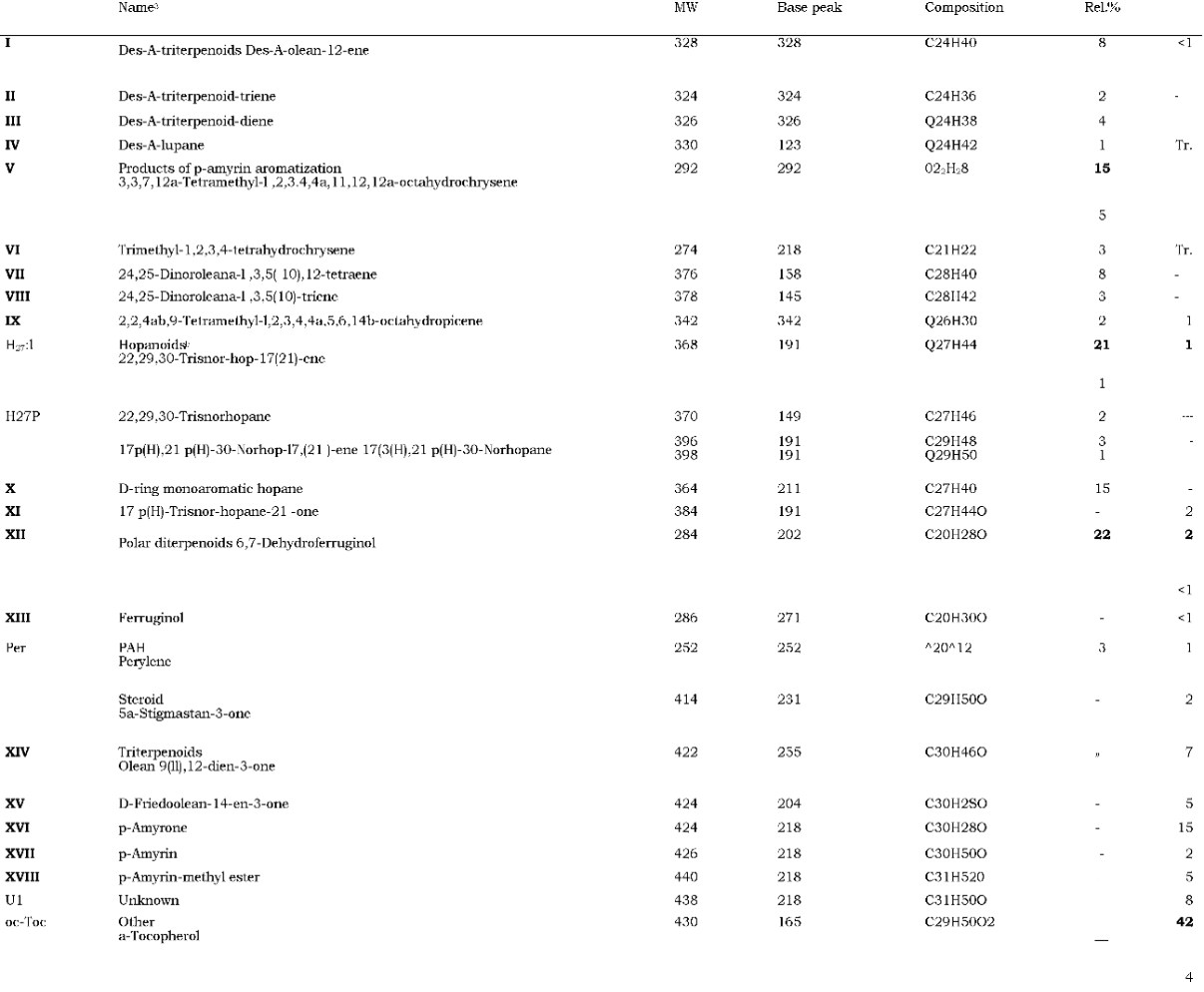
Table 3 – Compounds in bitumen (from GC/MS)
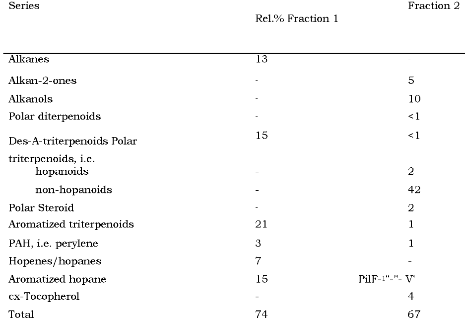
Table 4 – Homologous series in Lom bitumen (from GC/MS)
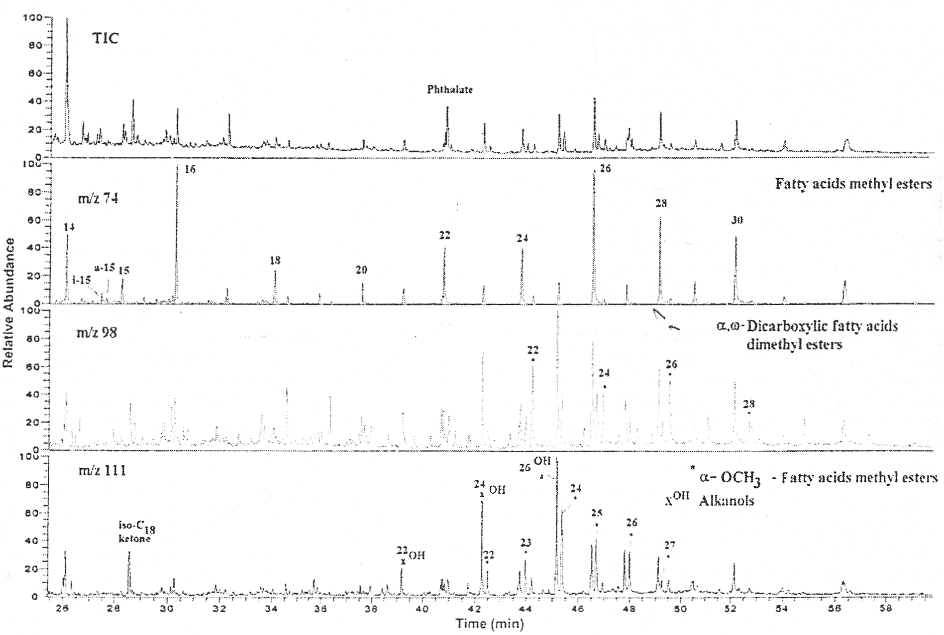
Figure 4 – Distribution of FAs released by TMAH thermochimolysis
4.4. Preparative offline TMAH thermochemolysis
The yield from preparative off line TMAH thermochemolysis was 6.7% on a dry-ash-free basis. Using Si02 column chromatography and TLC, the thermochemolysis products were fractionated into hydrocarbons (3.3 mg/g of sample subjected to thermochemolysis), FA methyl esters (FAMEs; 15.2 mg/g), phenols/catechols and lignin residues (10.3 mg/g), and polars (7.7 mg/g). About 4% of the sample was characterized using chromatographic and spectral methods. The first fraction of thermochemolysis products was composed of alkenes/alkanes (nC16-nC30) with a strong predominance of the regular isoprenoids prist-1 – ene and, to a lesser extent, prist-2-ene. The CPI was close to unity. The distribution gave a hint of the presence of resistant aliphatic biopolymers in lignite, e.g. cutin, suberin (de Leeuw and Largeau, 1993). There were no indications of hopanoids or steroids.
The second fraction was composed of phenol, its alkyl-ated homologues, catechols, long chain alcohols, the C18 isoprenoid ketone (6,10,14-trimethylpentadecan-2-one) and series of FAMEs. The distributions of FAs as methyl esters, i.e. n-monocarboxylic (nFA), dicarboxyiic (oc.co-diFAs) and methyl esters of hydroxycarboxylic acids (ot-OH-FAs) are presented in Fig. 4. The n-alcohol distribution can be seen using the m/z 111 mass chromatogram (Fig. 4), the nC2e homologue being slightly dominant. There is a similarity in this distribution to that of the free alcohols
(Fig. 3) and the same origin from higher plant leaf waxes via ester hydrolysis is proposed. In coal extracts, Niwa et al. (1988) identified n-FAs (nC24-nC34) and waxy esters (C49-Q54) maximizing at C24-C28for alkoxyl groups and C26-C28 for groups. They proved that esters were abundant at the lignite stage of maturation and gradually disappeared with coalification. These observations coincide well with our results for alcohols and FA distributions and evoke an epicuticular leaf wax input. The isoprenoid C18 ketone is supposed to be derived from microbial degra-dation of phytol and is often present among extracted or pyrolysed products of fossil materials (Deport et al., 2006).
FAMEs were the main aliphatic products of TMAH ther-mochemolysis. They are considered to originate from the transesterification of esters. To discriminate naturally occurring FAMEs and the products of transesterification, an additional experiment was performed with TEAAc. Un-der such conditions, ester hydrolysis is avoided because acetate is too weak a base to cleave ester bonds and reacts only with free carboxyl groups (Grasset et al., 2002), giving fatty acid ethyl esters (FAEEs). Using mass chromatograms of m/z 74 for FAMEs and m\z 88 for FAEEs, the distributions of free naturally occurring methyl esters and products of ester hydrolysis were compared. For both FAME and FAEE series, there were not significant differences in distribution profiles, which were bimodal. In the two cases, the shorter chain members were represented by the ubiquitous nC14, nC16 and nC18 acids, and the i- and ai-C15 acids as indicators of bacterial activity. The longer FAs were dominated by the nC26 homologue (Fig. 4). The similarity in FAME and FAEE distribution patterns is a clue for a probable similar origin for trapped and bound FAs.
In the products of TMAH thermochemolysis, series of bifunctional aliphatic compounds were also detected (Fig. 4): (i) a-methoxy methyl esters (ot-OCH3-FAMEs) in the C22-C27 range, maximizing at C24 with a low even/ odd dominance. Possible biological and/or non-biological a-oxidation of FAs is anticipated to give long chain a- OH-FAs in the natural environment (Volkman et al., 1998, and references therein), (ii) Even numbered a,co-diacid methyl esters in the C22-C28 range with a smooth distribution.
Aromatic compounds structurally related to lignin were the main aromatic components in the product of thermochemolysis. According to Hatcher and Clifford (1997), the contemporary view for peatification/coalification presumes cleavage of {3-0-4 bonds in lignin and subsequent realkylation of the aromatic ring. After that, demethylation of methoxy side chain functionalities takes place to produce catechol-like structures.
The third fraction of the product of thermochemolysis (Fig. 5) was entirely composed of aromatic compounds related to lignin. All the peaks in the pyrograms were assigned, but only those discussed in the text are indicated in Fig. 5. Hedges and Mann (1979) divided the various aldehydic, ketonic and acidic phenolic compounds produced during oxidation of geological samples into three groups based on the substituents of the aromatic nuclei inherited from lignin. In this way, the general vascular plant sources in the palaeoenvironment can be recognized. The concentrations of vanillyl, syringyl and cinnamyl phenolic units were related to plant variety, lignin concentration, tissue type and degree of transformation during deposition. The data allowed compositional regions to be distinguished in a C/V vs. S/V diagram (Meyers, 1997; Fig. 6): gymnosperm wood (non-flowering plants including conifers), nonwoody gymnosperm tissues, angiosperms (flowering plants including hardwood trees) and nonwoody angiosperms (herbs, grasses, etc.).
Low values for S/V and C/V ratios were obtained for the product of TMAH thermochemolysis (C/V 0.06, S/V 0.36). The C/V vs. S/V diagram indicated nonwoody angiosperm vegetation as the dominant plant input to the palaeo swamp, probably originating from marsh or grassland sources (Fig. 6). The C/V ratio is a useful parameter for discrimination between woody and nonwoody vascular plant tissues since ferrulic and p-coumaric acids only occur in the nonwoody type of plant material.
The results of TMAH thermochemolysis of the Lom lignite differentiate it from all the other Bulgarian Neogene lignites. A high dominance of guaiacyl structures (gymnosperms) and a total lack of syringyl units (angiosperms) was observed for the products of TMAH thermochemolysis of Maritza-East and Chukurovo lignites (Stefanova et al., 2001 and unpublished data). In Maritza-East and Chukurovo lignites (middle Miocene), a modest participation of Poaceae was also demonstrated by way of a low content of coumaryl structures, whereas a nonwoody angiosperm vegetation input was appreciable for the Lom lignite.

Fig. 6. Plot of lignin-derived phenol ratios in two dimensional diagram according to Hedges and Mann (1979). Arrow indicates ratio for sample investigated.
5. Palaeoenvironment implications
Palaeobotanical studies of the fossil flora and vegetation in the Central Balkan area reveal that many important transformations took place during the Miocene, both from the taxonomic and ecological points of view (Palamarev and Ivanov, 1998, 2003; Palamarev et al., 1999; Kovar-Eder et al, 2006). Significant changes in vegetation evolution, namely gradual replacement of the earlier evergreen and semi-evergreen plants with deciduous ones, are described. A profound change occurred during the late Miocene and Pliocene (Dacian-Romanian), related to disappearance and strong reduction in diversity of the oak-laurophyllous evergreen forest, reduction of macrothermic (= subtropical) floral elements and simultaneous increase in the role of arctotertiary species in plant communities, which became dominant in mesophytic forests. [The term arctotertiary elements, according to classical definitions (e.g. Mai, 1995), is used for plants which grew in the Arctic area during the Paleogene under a temperate to warm-temperate climate and correspondingly occur today in the temperate zone.] Thus, the increase in these taxa indicates a climate change towards cooling and a shift from subtropical to warm temperate climatic conditions. At the end of the Miocene and during the Pliocene, an increase in grasses and steppe vegetation has been recorded in the eastern Mediterranean and Black Sea area, which is interpreted as a response of the vegetation to global and regional processes, including climate cooling (e.g. Popescu, 2006; Jime- nez-Moreno et al., 2007; Ivanov et al., 2007b). Simultaneously with the changes in the mesophitic forests and involvement of steppe communities as an element of landscape-forming vegetation, changes in the swamp and mire vegetation took place. Usually, the swamp vegetation is regarded as more sensitive to local environment change, e.g. water supply, duration of inundation period, precipitation rates, seasonality, etc. However, global climate changes define the general trend in floral structure and composition of these communities. For example, in the area of Central Parathetys, Stuchlik et al. (1999) recognized gradual replacement of coniferous (Taxodium, Glyprostrobus)-dominated swamp by woody angiosperms (e.g. Alnus) throughout the middle and late Miocene. Apparently, during the Pliocene (Dacian-Romanian), the trend continued, with herbaceous plants as the main component of swamps and mires. The low quantity of palynomorphs restricts us in drawing such a deduction based only on palynological data, but the data from geochemical analysis strongly support the conclusion that the coal was deposited in an environment with predominantly herbaceous vegetation mixed with woody plants in a deltaic/limnic environment.
6. Conclusions
The contribution of palaeovegetation to the organic matter of coals is proposed to be estimated from ratios of the biomarkers contents, i.e. triterpenoids as indicators for angiosperms, and diterpenoids as conifer markers (Bechtel et al., 2002; Haberer et al., 2006). Inasmuch as the conifer markers are in negligible quantity (polar diterpenoids < 1%) in the bitumen extract, we assumed that gymnosperms did not significantly contribute to the vegetation of the palaeomire, a preponderance of angiosperm rich herbaceous-type flora being suggested during Lom lignite formation. Pollen data confirmed the presence of herbaceous wetland vegetation contributing to the peat accumulation in the swamp. The use of olean- anes for chemotaxonomic purposes was unsuccessful because most plants contain a/p-amyrins in considerable abundance.
The bitumen extract gave unequivocal information for an angiosperm contribution to the mire, while results from TMAH pyrolysis admitted a concomitant gymnosperm input. The biomarker assemblage makes Lom lignite unique in Bulgaria, the fossil plant taxa of all other Neogene lignites, i.e. Maritza-East and Chukurovo (middle Miocene) or Elhovo and Balsha (late Miocene – latest Maeotian to Pontian), being strongly dominated by coniferous vegetation, with only traces of angiosperm contributions. Biomarker assemblage and products of thermochemolysis reflect drastic changes in peat vegetation during Dacian- Romanian stage of Parathetys. Our study can be regarded as providing geochemical evidence for the assumed changes in the palaeovegetation in NW Bulgaria.
![Fig. 1. Geological map of NW Bulgaria during the Pliocene [redrawn after Popov and Kojumdgieva (1966), with corrections]. (1) Marginal (littoral) zone. (2) Inner zone. (3) Vidin high. (4) Boundary of basin during the Pontian (latest Miocene-earliest Pliocene). (5) Boundary of basin during early Pliocene. (6) Boundary of basin during late Pliocene.](images/art5_1.png)







